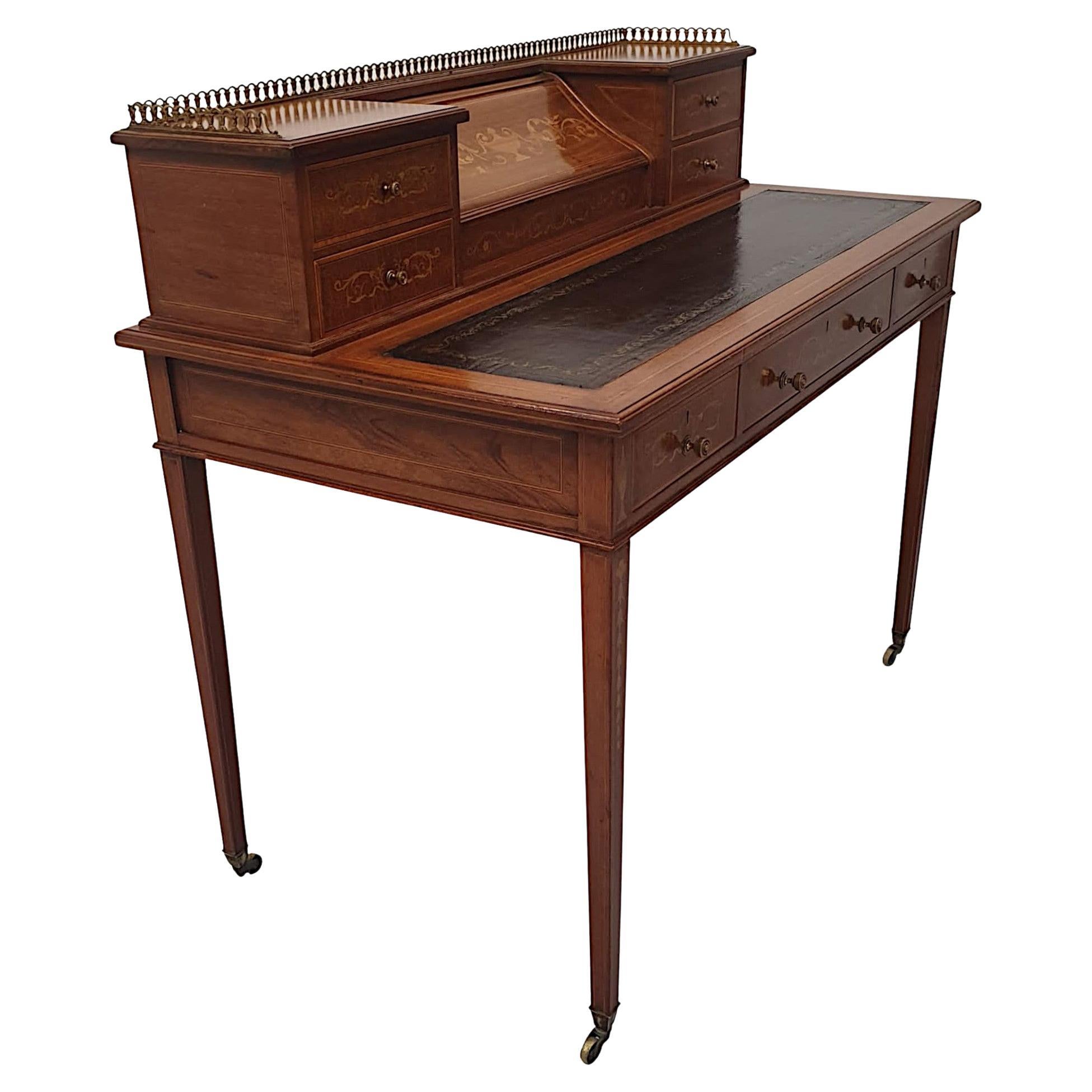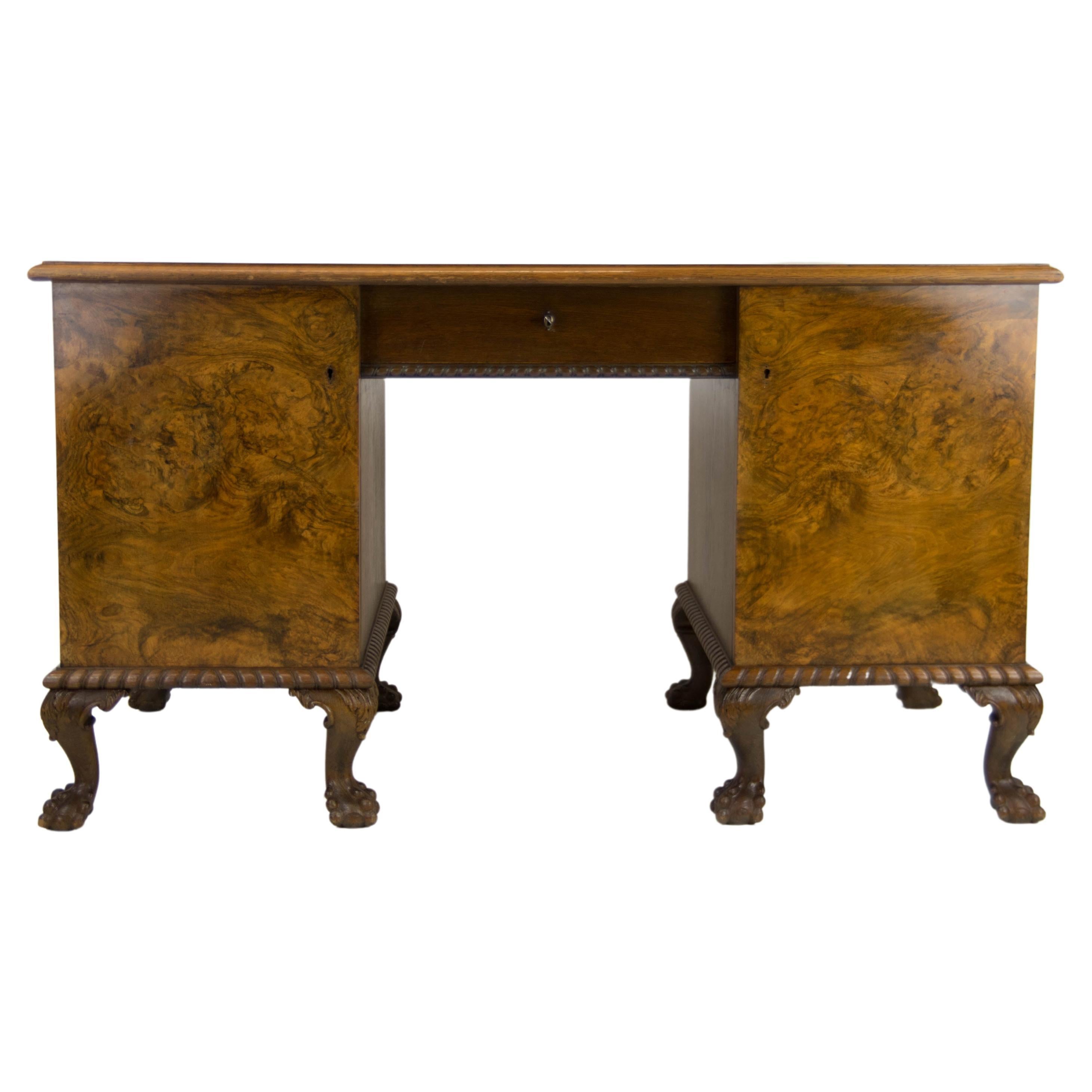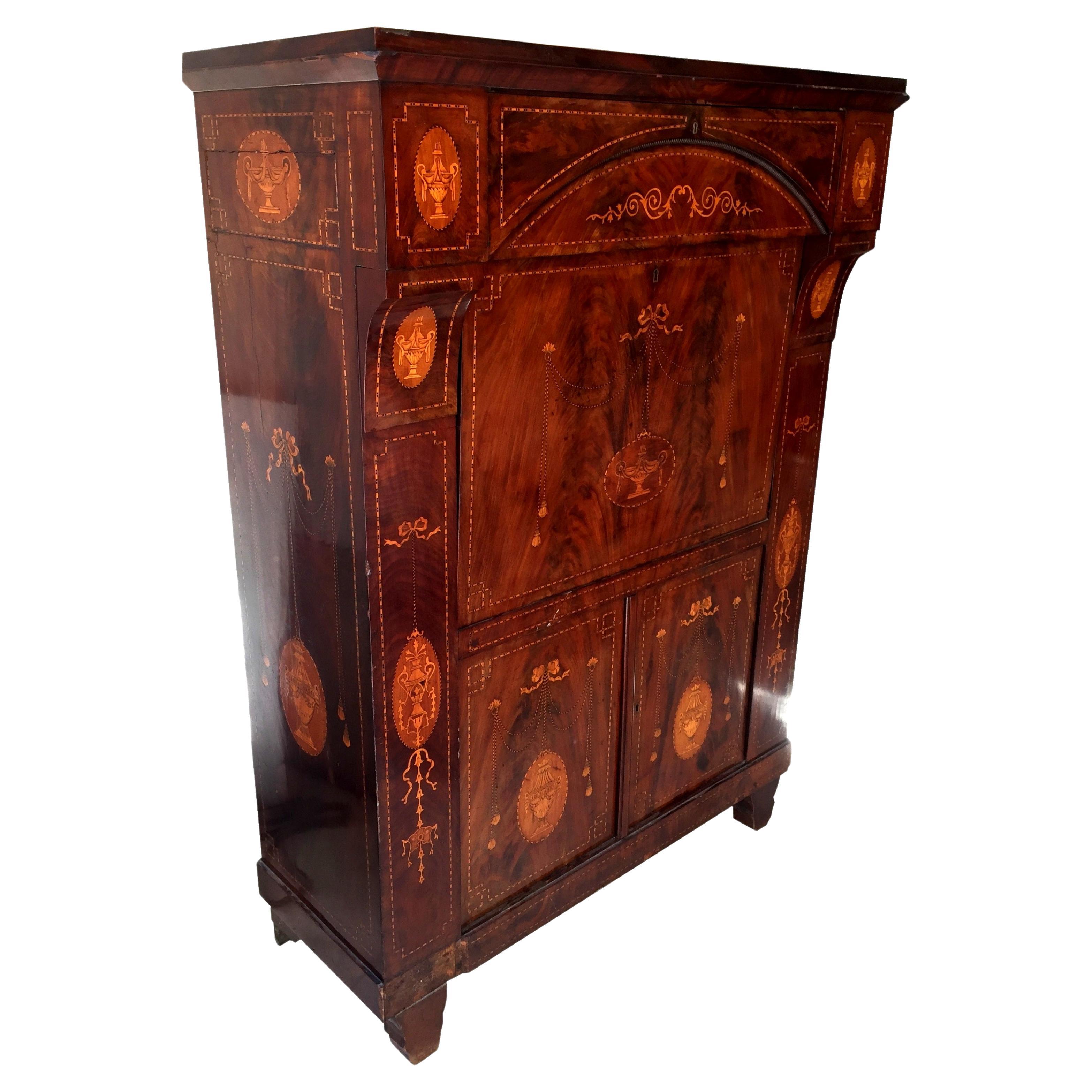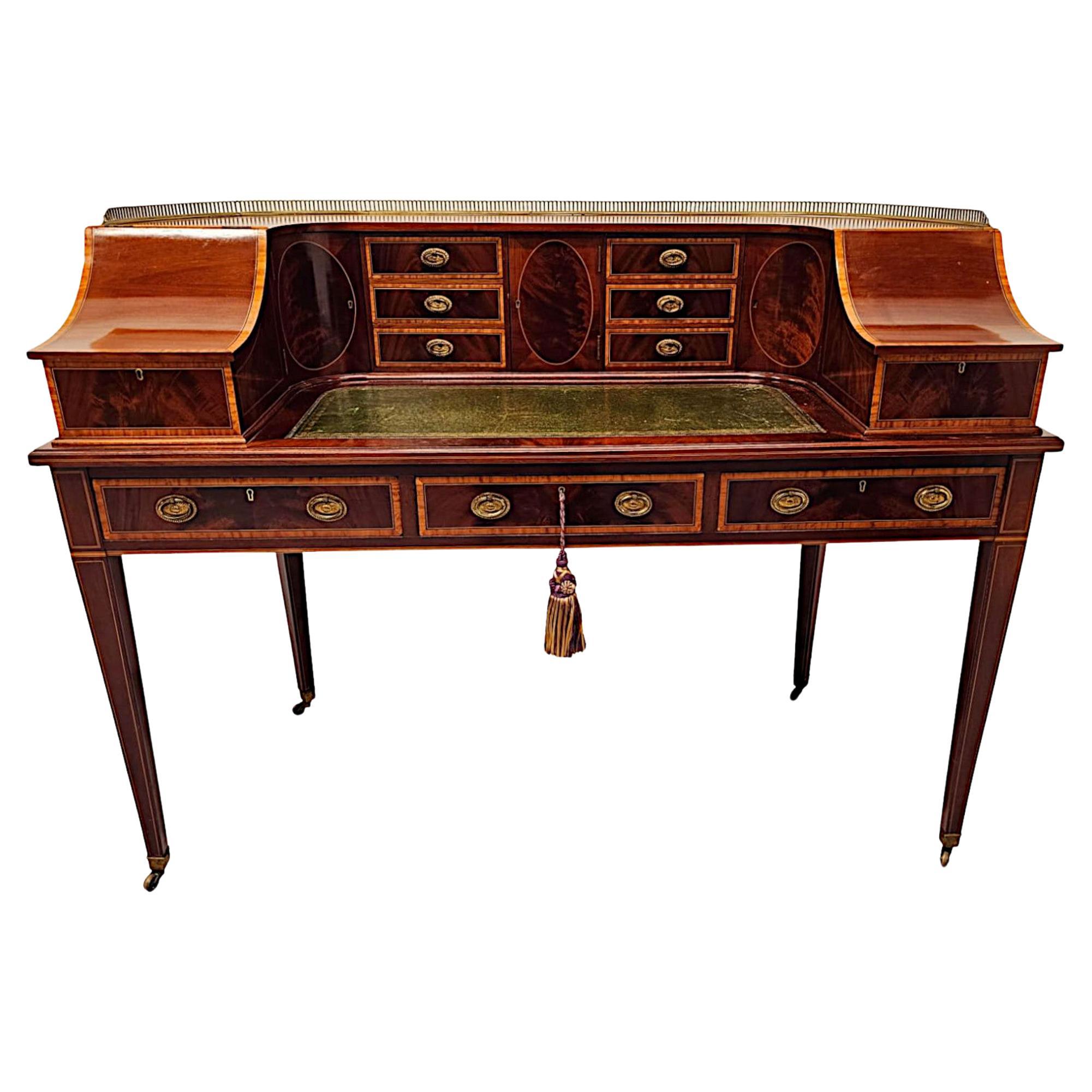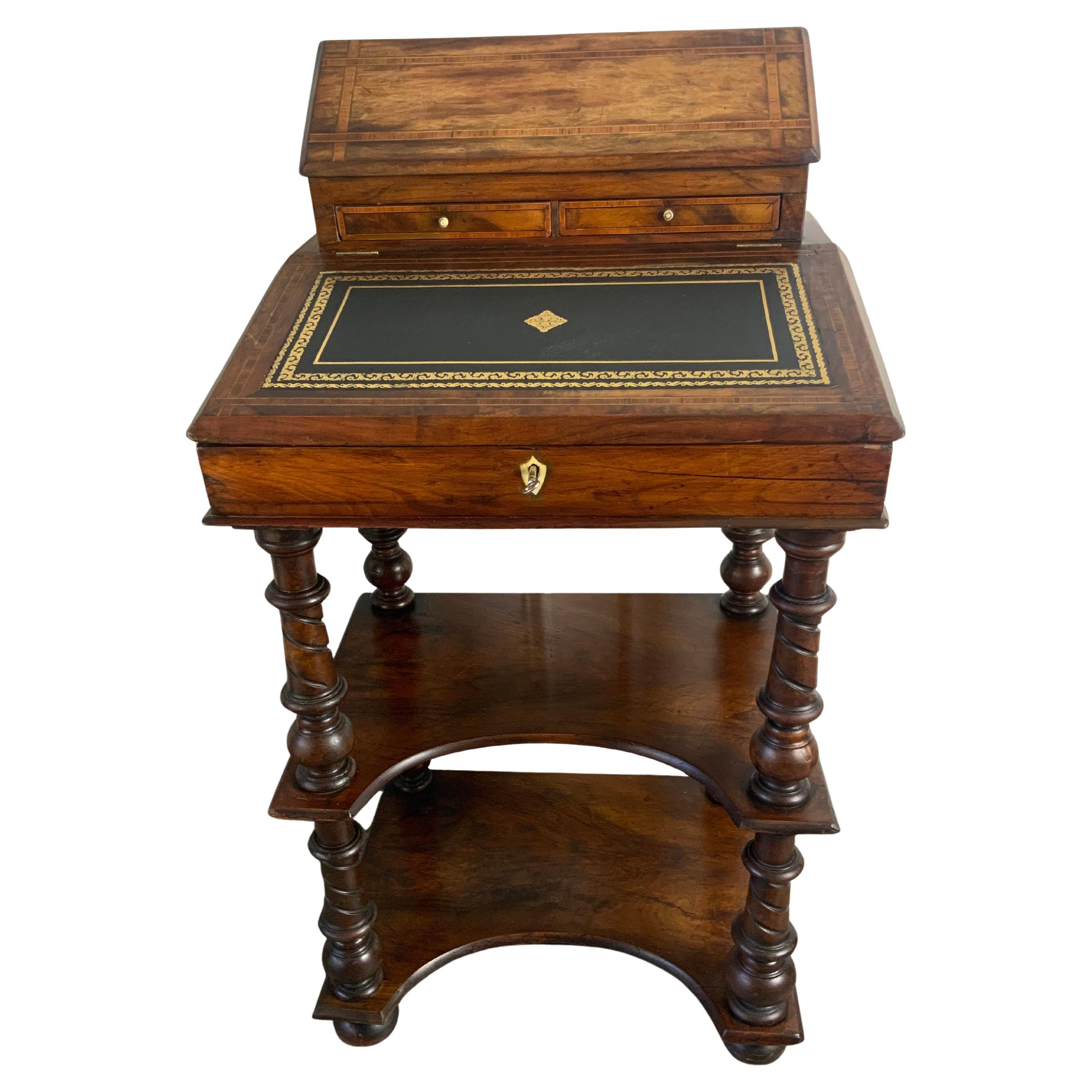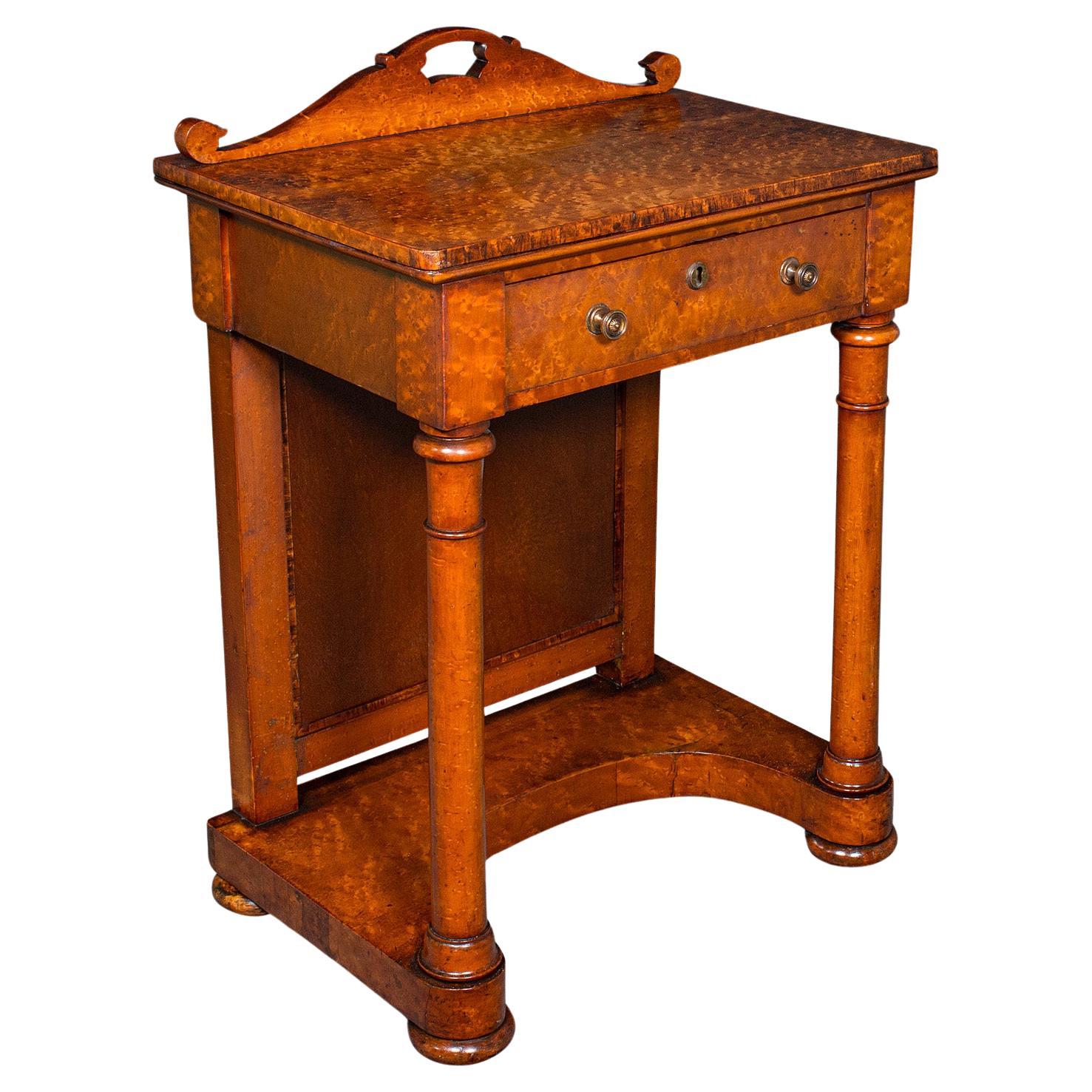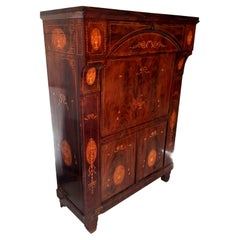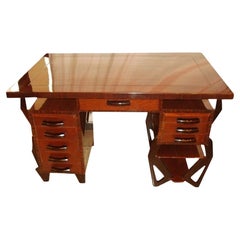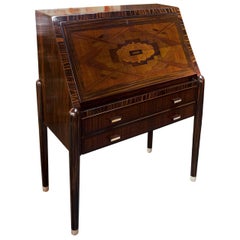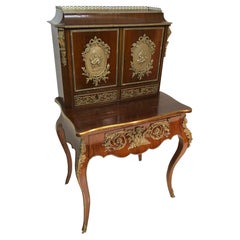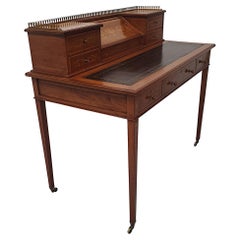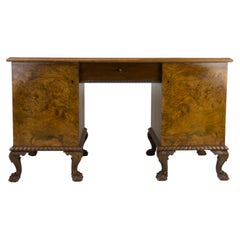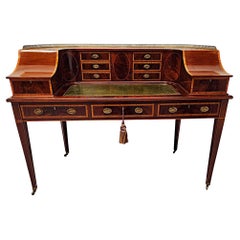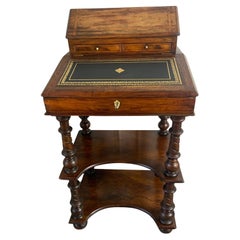Items Similar to Desk Arts and Crafts , 1890, England
Video Loading
Want more images or videos?
Request additional images or videos from the seller
1 of 22
Desk Arts and Crafts , 1890, England
$18,000
£13,688.21
€15,788.68
CA$25,214.71
A$28,220.24
CHF 14,735.37
MX$344,288.56
NOK 187,046.17
SEK 177,495.30
DKK 117,902.41
Shipping
Retrieving quote...The 1stDibs Promise:
Authenticity Guarantee,
Money-Back Guarantee,
24-Hour Cancellation
About the Item
The set includes, armchair, desk and desk accessories. It is from the first era.
Bibliography: Revue de l’Art N°185 – March 2014, p. 23.
Founded in 1857 by Gustave Keller, the Keller house specializes in luxury goods and leather goods, quickly noticed and appreciated, enjoying recognition at world exhibitions. In 1878, his two sons took over the company under the name “Successors of Keller's son and son-in-law” and added table goldsmithing and various objects to their activities.
The production is awarded at the universal exhibitions of 1889 and 1900.
Keller's notoriety is so great that official orders flow in, including the royal courts of Spain, Romania, Greece, Russia and the Principality of Monaco. Tsar Nicholas II of Russia was regularly supplied at the end of the 19th century. Many works are present in different prestigious museums such as Les Arts Décoratifs, Orsay or the Hermitage museum. Established in Paris at 65, rue de Turbigo, the Keller house moved its shop and workshop to 22 rue Joubert in 1891. In 1929, the shop was registered at 18 avenue Matignon. The company will cease its activities around 1947.
Style: Art Nouveau or Modernism or Jugendstil
Year: 1900
Materials :wood.
We have specialized in the sale of Art Deco and Art Nouveau styles since 1982.If you have any questions we are at your disposal
Pushing the button that reads 'View All From Seller'. And you can see more objects to the style for sale.
Art. Nouveau
The name "Art Nouveau" in French means "new art". It is also known as Jugendstil in Germany. In contrast, in Vienna and in Italy, "Liberty style". The Art Nouveau designs used curvilinear sinuous asymmetrical lines, often based on plant forms. and feminine silhouettes. The style was used in architecture, interior design, glass, jewelry, sculpture, painting, posters and illustration. Introduced new materials such as opals and semi-precious stones Art Nouveau had its greatest impetus in the 1900 Universal Exhibition in Paris. After that, it spread throughout Europe, USA and Australia In Paris you can see the entries in metro are of Hector Guimard and Émile Gallé. Some artists are: Gustav Klimt, Charles Rennie Mackintosh, Alphonse Mucha, René Lalique, Antoni Gaudí and Louis Comfort Tiffany. Victor Horta had a decisive impact on architecture in Belgium. Each of them interpreted it their way.
Why are there so many antiques in Argentina?
In the 1880 – 1940 there was a grate wave of immigration encouraged by the periods of war that were taking place.
1st World War took place between 1914 and 1918
2nd World War took place between 1939 and 1945
The immigrants options were New York or Buenos Aires. Tickets were cheap and in Buenos Aires they were welcomed with open arms, as it was a country where everything was still to be done.
Argentina was the country of new opportunities, labour was needed and religious freedom was assured, in many cases the of the family travel first until they were settled and then the rest of the family members join them.
In the immigrant museum “Ellis Island Immigrant Building” in New York you can se the promotional posters of the boats that would take them to a new life.
Between the years 1895 and 1896, Argentina had the highest DGP (gross domestic product) per capita in the world according to the Maddison Historical Statistics index, this situation arose due to the large amount of food being exported to European countries, which were at war.
The Argentinean ships left the port of Buenos Aires with food, but they returned with furniture, clothes and construction elements, (it´s common to see this the old buildings of the historic neighbourhood of San Telmo, the beams with the inscription “Made in England)”, as well as many markets that were built in Buenos Aires, such us the San Telmo Market, whose structure was brought by ship and afterwards assembled in 900 Defensa Street.
With the great influence of European immigrants living in the country, the children of the upper classes travelled to study in France, resulting in the inauguration of “La Maison Argentinienne”, on 27th of June 1928, in the international city of Paris, which hosted many Argentinians that were studying in Frace.
It´s the fourth house to be built after France, Canada and Belgium, being the first Spanish-speaking one. Still in place today (17 Bd Jourdan, 75014, Paris, France). Many of the children of these wealthy families who attended international art exhibitions, museums and art courses abroad, took a keen interest in the European style. This is why Buenos Aires was at the time referred as “The Paris of South America”.
Between the years 1890 and 1920 more than a hundred Palaces were built on Alvear Avenue the most exclusive avenue in Buenos Aires. Today some of these palaces have been transformed into museums, hotels and embassies.
In the year 1936, the Kavanagh building was inaugurated, it was the tallest reinforced concrete building in South America.
During 1994 the American Society of Civil Engineers distinguished it as an “international engineering milestone”, and it´s now considered a World Heritage of Modern Architecture.
At the time was common to hire foreign architects such as Le Corbusier, who visited Buenos Aires/Argentina in 1929 and in 1948 he drew up the blueprints for a house built in La Plata City (which was declared a World Heritage Site).
In 1947, the Hungarian architect Marcelo Breuer designed “Parador Ariston” in the seaside city of Mar del Plata. After an Argentinean student at Harvard University convinced him to come to Argentina. He worked on an urban development project in the Casa Amarilla, area of La Boca.
The Ukrainian architect, Vladimiro Acosta, arrives in Argentina in 1928 and worked as an architect until que moved to Brazil.
Antonio Bonet, a Spanish architect who worked with Le Corbusier in Paris, arrives in Argentina in 1937, where he carried out several architectural works and in 1938 designs the well-known BFK chair.
Andres Kálnay, of Hungarian origin, made around 120 architectural masterpieces, among which the former Munich brewery stands out, he even made the furniture’s design.
The German architect, Walter Gropius, director of the Bauhaus, lived in Argentina, where he wrote articles for “Sur” magazine and founded in Buenos Aires, an architectural firm with Franz Möller, who was also an architect, where he built two houses.
At the same time several famous designers decided to immigrate to Argentina, among them we can find the well-known French designer, Jean-Michel Frank, who arrived in the country in 1940 and also worked for the Rockefeller family.
Special pieces were made, which were sold exclusively in the country, such as the well-known German company “WMF”, who sold their products by catalogue, which were chosen by the ladies of high society in the list of wedding gifts, as well as the pieces designed by Christofle.
The Swiss sculptor Alberto Giacometti, made special pieces for Argentinean mansions.
In 1904 the first Jansen branch outside Paris was established in Buenos Aires, as the Argentinean clientele demanded a large amount of furniture, from the end of the 19th century to the mid-20th century.
In 1970, the brand Rigolleau Argentina made pieces authorised by Lalique.
The brands Maple and Thompson also set up shop in the country.
The French plastic artist, Marcel Duchamp moved to Argentina in 1918-1919.
Glass signed Gallé, Charder, Leverre, Schneider, Muller and other French firms. They were bought in flower shops and were given to ladies with beautiful floral arrangements.
Some furniture manufacturers travelled to international fairs and bough the patterns to produce the furniture in Argentina, such as the furniture firm Englander and Bonta, who bought the patterns ins Italy.
It is worth mentioning that in Argentina we have the largest community of Italians outside of Italy, as it is estimated that 70 percent of the inhabitants have at least one Italian descendant, followed by Spanish immigrants.
The most Important furniture stores in Argentina:
Comte is founded in 1934 (under the direct management of Jean Michel Frank in 1940).
Nordiska (Swedish company established in 1934).
Churba in 1960, a company that brought foreign designers to present their furniture in the country:
Denmark: (Arne Jacobsen, Finn Juhl, Bender Madsen, Ejner Larsen, Poul Kjaerholm, Hans Wegner)
Sweden: (Hans Agne Jakobsson, Gustavsberg)
United States: (Herman Miller)
Finland: (Lisa Johansson, Folke Arstrom, Tapio Wirkkala, Alvar Aalto, Timo Sarpaneva)
Swedish Factory: (Orrefors)
Italy: (Littala, Vico Magistretti, Emma Gismondi, Gae Aulenti, Angelo Mangiarotti, Elio Martinelli, Gianna Celada, Angelo Mangiarotti, Mario Bellini, Carlo Scarpa)
Finland: (Olivia Toikka)
Plata Lappas (Lappas Silver): a goldsmith shop founded in 1887 in Argentina by Alcibiades Lappas of Greek origin.
In 2019, in Argentina took place “the Art Deco world congress”, in which we participated as hosts invited by Geo Darder, founder of the Copperbridge – Foundation, in which prominent people from all over the world attended to learn about Art Deco in Argentina.
Argentina currently has more than 100 Art Deco buildings and another 90 Art Nouveau buildings throughout the city of Buenos Aires.
Argentina is a country that has not been involved in many wars, which is why it has been a refuge for works of art and antiques from different periods of time, unlike European countries. That is way many collectors, museums and antique dealers from all over the world visit it, you should not miss the opportunity to visit this great country.
Laura Guevara Kjuder, architect.
- Dimensions:Height: 49.22 in (125 cm)Width: 24.41 in (62 cm)Depth: 13.78 in (35 cm)
- Style:Art Nouveau (Of the Period)
- Materials and Techniques:
- Place of Origin:
- Period:
- Date of Manufacture:1890
- Condition:Wear consistent with age and use.
- Seller Location:Ciudad Autónoma Buenos Aires, AR
- Reference Number:Seller: F-TO-1stDibs: LU6785241604632
About the Seller
5.0
Vetted Professional Seller
Every seller passes strict standards for authenticity and reliability
Established in 1982
1stDibs seller since 2022
37 sales on 1stDibs
Typical response time: <1 hour
- ShippingRetrieving quote...Shipping from: Ciudad Autónoma Buenos Aires, Argentina
- Return Policy
Authenticity Guarantee
In the unlikely event there’s an issue with an item’s authenticity, contact us within 1 year for a full refund. DetailsMoney-Back Guarantee
If your item is not as described, is damaged in transit, or does not arrive, contact us within 7 days for a full refund. Details24-Hour Cancellation
You have a 24-hour grace period in which to reconsider your purchase, with no questions asked.Vetted Professional Sellers
Our world-class sellers must adhere to strict standards for service and quality, maintaining the integrity of our listings.Price-Match Guarantee
If you find that a seller listed the same item for a lower price elsewhere, we’ll match it.Trusted Global Delivery
Our best-in-class carrier network provides specialized shipping options worldwide, including custom delivery.More From This Seller
View AllDesk in Wood, 1940, Made in France
Located in Ciudad Autónoma Buenos Aires, C
It is an elegant and sophisticated dream desk.
The quality of the furniture and the exotic wood used make it unique. It is an icon of distinction.
You want to live in the golden yea...
Category
Vintage 1940s Italian Art Nouveau Desks and Writing Tables
Materials
Bronze
Desk Jugendstil, Art Nouveau, Liberty , 1900, France, Wood
By Louis Majorelle
Located in Ciudad Autónoma Buenos Aires, C
Desk
Style: Art Nouveau or Modernism or Jugendstil
Year: 1900
Materials :wood.
We have specialized in the sale of Art Deco and Art Nouveau styles since 1982.If you have any question...
Category
Antique Early 1900s French Art Nouveau Desks and Writing Tables
Materials
Wood
Art Deco Desks in Wood, 1930, Made in France
Located in Ciudad Autónoma Buenos Aires, C
French Desk style: Art Deco
Year: 1930
Material: wood
It is an elegant and sophisticated dream desk.
The quality of the furniture and the exotic wood used make it unique. It is an ...
Category
Vintage 1930s French Art Deco Desks and Writing Tables
Materials
Wood
$17,000 / item
Desk in Wood, 1900, Made in France
Located in Ciudad Autónoma Buenos Aires, C
It is an elegant and sophisticated dream desk.
The quality of the furniture and the exotic wood used make it unique. It is an icon of distinction.
You want to live in the golden yea...
Category
Antique Early 1900s French Louis XVI Desks and Writing Tables
Materials
Bronze
Desk Art Deco, 1920, France, Materials: Wood and Bronze
Located in Ciudad Autónoma Buenos Aires, C
French Desk Style: Art Deco
Year 1920
Wood and bronze
Finish: polyurethanic lacquer.
It is an elegant and sophisticated dream desk.
The quality of the furniture and the exotic wood...
Category
Vintage 1920s French Art Deco Desks and Writing Tables
Materials
Bronze
French Desk Art Deco, 1920, Materials: Wood
Located in Ciudad Autónoma Buenos Aires, C
Art Deco Desk
Year 1920
French
Finish: polyurethanic lacquer
It is an elegant and sophisticated dream desk. It has a large work surface.
The quality of the furniture make it unique. ...
Category
Vintage 1920s French Art Deco Desks and Writing Tables
Materials
Wood
You May Also Like
Very Fine Edwardian Desk Attributed to Edward and Roberts
By Edward & Roberts
Located in Dublin, IE
A very fine Edwardian richly patinated mahogany desk attributed to Edward and Roberts. Line inlaid throughout and with fabulous marquetry detail depicting Neoclassical motifs of urns...
Category
Early 20th Century English Desks and Writing Tables
Materials
Brass
Art Nouveau Freestanding Writing Table, 1920s
Located in Praha, CZ
Art Nouveau freestanding desk with 5 drawers.
Very good condition according to age.
Only minimal scratches, surface gently restored.
Category
Vintage 1920s European Art Nouveau Desks and Writing Tables
Materials
Wood
A Very Fine Edwardian Carlton House Style Desk
By Carlton House Fine Furniture
Located in Dublin, IE
A very fine Edwardian richly patinated and beautifully figured mahogany Carlton House style desk of exceptional quality, stunningly carved wi...
Category
Early 20th Century English Edwardian Desks and Writing Tables
Materials
Brass
Edwardian Walunt Davenport Desk
Located in Bradenton, FL
A nice quality Edwardian Walnut Davenport desk with two shelves divided by nicely turned Walnut posts. Walnut and burl Walnut veneer with Tulipwood banding inlay on the top of the l...
Category
Antique 1880s English Edwardian Desks
Materials
Walnut
Antique Ship's Purser's Desk, English, Writing Table, Beidermeier, Victorian
Located in Hele, Devon, GB
This is an antique ship's purser's desk. An English, burr walnut Davenport writing table in the Beidermeier taste, dating to the Victorian period, circa 1880.
Exquisite craftsmanshi...
Category
Antique Late 19th Century British Victorian Furniture
Materials
Walnut
19th Century, French Wood Travel Desk
Located in IT
19th Century, French Wood Travel Desk
Measures: cm H 103 x W 52 x closed D 9. Open D 59 cm
This particular travel desk was made in France, in the earl...
Category
Antique Early 19th Century French Empire Desks and Writing Tables
Materials
Wood
More Ways To Browse
Arts And Crafts Silver Jewellery
Hotel Desk
Liberty Chair England
Writing Set Silver
Corbusier Desk Chair
Australian Dealers
Spanish Desk Chair
Antique Traveling Desk
Italian Leather Desk Set
American Marquetry
Antique Greek Desk
German Plant Table
Giacometti Desk
Civil War Desk
Harvard Desk
Spanish Marquetry
Danish Painting 1920s
Antique Jewelry Australia
